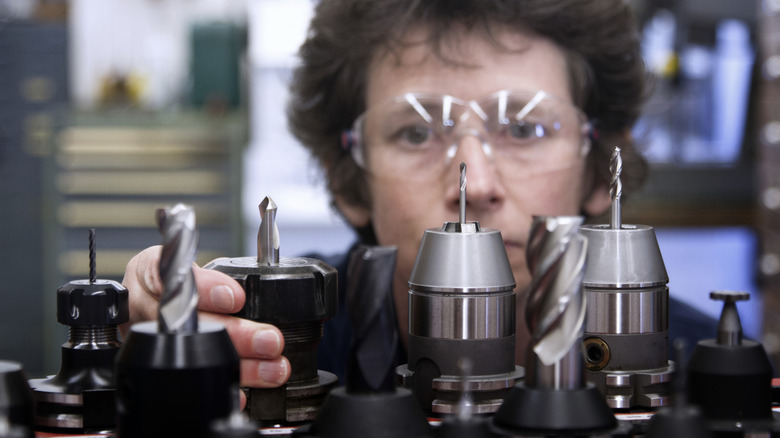How To Sharpen Drill Bits Without A Heavy-Duty Tool
Drill bits are power tool accessories every homeowner should have, as their versatile nature allows you to accomplish a wide array of DIY projects. But like any other tool that alters materials (think saws, axes, knives), drill bits lose their sharp edge after a while. One of the red flags that your drill bits are in need of sharpening is excessive heat produced while you're trying to drill. This happens because the bit isn't able to puncture through the material effectively, and it ends up rubbing against it instead, generating friction and heat.
Another, more obvious, sign is that the bit just doesn't go through the material as smoothly and quickly as it used to, and you're forced to apply far more pressure to get the same results. When you drill holes into metal, ending up with small metal shards all around the hole is yet another indicator that the drill is dull.
The best way to sharpen drill bits is with a grinder. However, if you don't have one and don't feel like investing in this power tool, we've got some great news. Armed with a diamond hand file, a bit of muscle power, and lots of patience, you can hand-sharpen the drill bits without any power tools. Since you'll be applying force to a sharp metal object, you'll need to wear appropriate protective equipment, such as work gloves and safety goggles. Here are the steps for sharpening dull drill bits with a hand file.
Steps for sharpening a drill bit with a hand file
Stability is paramount, so you'll need to perform this task at a workstation with a vise. Start by securing the drill bit in a vise with the tip facing upward. Then, clean the drill meticulously with a cloth. You want to end up with a drill bit tip that's free of any wood or metal shavings, or any other grime or debris.
Now you're ready to sharpen. Take your hand file and drag it firmly across the tip, following the direction of the cutting edge. Be sure to keep the file at the same angle as the bevel to maintain the integrity of the cutting edge. After several strokes on one side, go to the other side of the vise (or rotate the drill bit 180 degrees, whichever is simpler) and give it the same number of strokes using the same motion. Repeat this process between five and 10 times. Then take the drill bit out of the vise and test it out. If you notice that you can drill the perfect pilot hole again as if the bit were new, you're done. Otherwise, continue sharpening using the same steps described above.
Once you're satisfied that the drill bit is sharp enough, you can wipe the tip and use it normally. To keep drill bits in tip-top shape, use them only to work on the material for which they're designed. Also, where possible, apply lubricant to the bit before use to minimize the damaging effects of friction.
